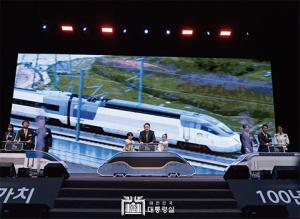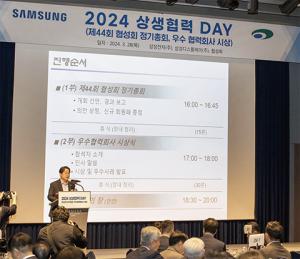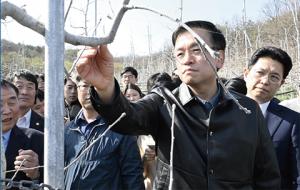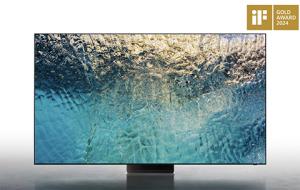 |
‘일하는 사람이 중심이 되는 직업학’을 모토로
시대가 요구하는 직업 전문가를 양성하다
경기대학교 일반대학원 직업학과 강순희 교수
2014년도 기준 대한민국의 청년 고용률은 역대 최저 수치인 40%를 기록했다. 이 수치는 OECD 평균보다 10% 이상 뒤지는 결과다. 앞서 정부는 2017년까지 고용률 70% 달성을 목표로 청년·여성에 대한 일자리 창출에 나서겠다고 했지만, 늘어나는 일자리 대부분이 50~60대 중장년층 위주의 시간제 일자리에 국한되어 있다는 지적이 나오고 있다. 당면한 청년 실업 문제 해결과 더 많은 일자리를 창출하기 위해서는 더 이상의 탁상공론은 무의미해 보인다. 이에 지난 26년간 끊임없는 연구로 직업학을 정립하고 선진적 노동환경 정착에 힘써온 경기대학교 일반대학원 직업학과의 강순희 교수를 만나 다양한 일자리 창출 방안에 대해 알아보고 새로운 학문 패러다임을 지향하고 있는 직업학에 대해 함께 고찰해 본다.
국내 최초의 직업학과에서 15년 동안 200여명의 전문 인력을 배출
강순희 교수는 성균관대학교 대학원 경제학 석·박사과정과 미국 위스콘신대학 박사 후 과정에서 노동경제 분야를 전공하였는데, 1988년 한국노동연구원 창립멤버로 시작하여 그간 취업문제와 실업난 해소, 임금 및 근로조건 개선, 직업훈련과 일자리 창출 등 우리 현실에서 긴요한 정책들을 연구해 왔다. 2003년에는 중앙고용정보원(현 한국고용정보원)의 원장직을 역임하며 우리나라 최초로 ‘진로와 직업’이라는 초·중등교과서 편찬을 주도했고, 진로지도교사연수 프로그램과 직업체험프로그램 개발, 첨단고용정보시스템 구축을 통해 고용정보원의 위상을 드높이는 계기를 마련하기도 했다. 특히 2005-2008년 대통령비서실 고용노동정책비서관으로 재직 할 당시에는 고용지원시비스개선과 비정규직근로자보호에 앞장서며 정책전문가로도 크게 활약한 바 있다. 지난 2012년부터는 직업학 정립과 후진 양성이라는 큰 뜻을 이루기 위해 경기대학교 일반대학원 직업학과로 자리를 옮겨 주임교수로서 교육과 연구에 매진해 오고 있다. 이 학과는 국내 최초의 직업학과로 2000년 설립된 이래 지난 15년간 직업관련 분야 전문 인력 양성에 앞장 서 왔으며, 현재까지 약 200여명의 석·박사 전문 인력을 배출해 냈다. 직업학과의 졸업생들 중 50% 이상은 취업지원 서비스 관련 분야에서 활약하고 있으며, 10% 정도는 학계에 종사하여 직업학 발전에 기여하고 있다. 또한 나머지는 공공 및 민간기업, 교육 분야에서 직업전문가, 인사노무담당자로 활동하고 있다. “장기화되는 저성장 시대에 청년 실업문제와 일자리 부족 현상은 국가경제와 복지 발전을 저해하는 가장 큰 요소로 작용합니다. 그만큼 앞으로는 일자리와 관련한 정책을 만들고 전문적인 서비스를 제공할 수 있는 인력의 수요가 급증할 것으로 예상됩니다.”
직업학에는 두 가지 대상이 있는데 하나는 일을 하는 사람이고, 다른 하나는 일을 제공하는 직업 현장이다. 직업학이란 궁극적으로 일을 둘러싼 인간의 심리, 행동, 행태, 구직과 관련한 활동, 일터에서의 활동 등을 분석하여 직업심리, 직업상담, 직업소외, 직업건강 등에 적용하는 사람에 대한 학문이자, 노동경제학, 노사관계론, 인적자원 관리와 개발, 조직이론, 직업교육, 산업사회학 등 기존의 경영학, 경제학, 사회학, 교육학, 심리학 영역의 이론들을 직업 현장에 맞게 재해석하는 학문이다. “기존의 경영학이 조직의 입장에서 모든 것을 보아왔다면 직업학은 그 속에서 어떻게 조직의 발전과 일하는 사람의 행복이 함께 충족될 수 있는지를 연구하는 분야입니다. 이에 저희 학과는 ‘일하는 사람을 중심으로 하는 인본주의를 기본 철학으로 하는 직업학’을 모토로 연구를 지속하고 전문가 양성을 선도하고자 하고 있습니다.”
대기업 중심의 취업 패러다임부터 변화해야 한다
강 교수는 직업에 대한 기본적인 인식과 교육관부터 변화해야 할 때라고 설파한다. 그동안 우리는 어린 아이들의 개별적인 적성은 고려하지 않고 천편일률적으로 내신을 잘 받을 수 있는 고등학교에 진학하여 명문대학에 입학할 것을 종용해 온 것이 사실이다. 그렇게 부모와 교사의 뜻에 따라 성적에 맞추어 대학과 과를 선택한 청년들은 뒤늦게 진로와 직업선택을 앞두고 가치관의 혼란을 겪기 마련이고, 그런 현상이 근본적으로는 청년실업을 야기하고 있다는 것이 강 교수의 견해다. “일자리가 없다고들 하는데 중소기업을 중심으로 한 좋은 일자리는 얼마든지 있습니다. 그럼에도 불구하고 청년실업률이 증가하는 것은 정보가 부족하고 일에 대한 가치관이 잘못되어 있기 때문인데, 우리는 명문대 진학과 대기업 취업만이 성공한 삶이라는 신화가 깨어지는 최근의 일련의 현상들에 주목할 필요가 있습니다.” 대기업을 중심으로 한 취업의 패러다임을 변화시켜야 한다고 말하는 강 교수는 중소기업에 대한 국가 차원의 지원과 불필요한 규제 완화, 체계적인 직업 및 진로교육이 청년 실업 극복과 직업의 다양성 확보를 넘어 내수시장 활성화를 통한 지속적인 국가경쟁력 확보에도 크게 기여할 수 있을 것이라 덧붙였다.
한편 한국직업자격학회의 회장직을 맡고 있는 강 교수는 기존의 학회처럼 교수와 연구자 중심이 아닌 한국산업인력공단, 상공회의소, 관련 협회 등 실무종사자와 현장 전문가가 같이 참여하는 학회를 통하여 직업과 자격제도의 발전에도 힘을 쏟고 있다. 이에 정부에서도 비상한 관심을 쏟으며 실직적인 지원을 아끼지 않고 있다는 후문이다. “향후 교육자로서 현장중심, 학생고객 맞춤형 교육에 앞장서며, 학자로서 기존의 이론들을 직업학적 입장에서 재해석해 나가는 연구에 더욱 매진 할 계획입니다. 그로써 직업학에 대한 인식과 활용 가치가 높아지기를 기대하고 있습니다.” 앞서 강 교수가 우직하게 진행해 왔던 연구의 싹이 정책화라는 멋진 꽃을 피웠듯이 이제 그의 가르침을 전수 받은 후학들이 고질적인 실업난과 고용 문제를 해결하여 대한민국 경제의 새로운 봄을 불러 와 주기를 바래본다.
Rears occupation experts demanded by the times
with ‘vocational science oriented toward workers’
Prof, Kang Soon-hie, Graduate School of Vocational Science, Kyonggi University
As of 2014, youth employment of Korea hit 40%, the lowest in Korean history. This statistics show the result of over 10% lower than OECD average. Though the present government earlier promised to go out for creating jobs for youths and women with the aim of achieving an employment of 70%, it is indicated that the increasing number is mostly restricted to part-time jobs for the 50’s and 60’s. It seems that further desk theory is nonsensical in order to resolve the current problem of youth unemployment and create more jobs. We met Prof. Kang Soon-hie at Kyonggi Univ. department of occupational science, who has established his own occupational science with constant research for the past 26 years. Let’s find out about his diverse plans for creating jobs and consider the occupational science aiming at a new paradigm of scholarship.
Department of Vocational Science first established in the nation has turned out 200 professionals for 15 years
Prof. Kang Soon-hie obtained master’s and doctor’s degree in economics from the graduate school of Sungkyunkwan University and majored in Labor Economics for postdoctoral course at Wisconsin University of the US. Starting as a founding member of the Korea Labor Institute in 1988, he has been working on policies absolutely needed in our society for employment, relieving unemployment problem, improving wages and working conditions, vocational training and creating jobs. In 2003, he took the lead in compiling elementary and middle school textbooks called ‘Career and Occupation’ for the first time in our history serving as the president of Central Employment Information Service (currently, Korea Employment Information Service), developed programs for training career guidance teachers and experiencing occupations, and made an opportunity to enhance the prestige of the organization through constructing high-tech employment information system. Especially, when he was working as a secretary for employment and labor policy at the Blue House from 2005 until 2008, he made his presence felt as a policy specialist by spearheading the improvements on employment support service and protection of irregular workers. Since 2012, he transferred to Kyonggi University, Department of Occupational Science to establish the science and rear his juniors devoting himself to education and research as the head of the department. This is the first Department of Vocational Science in the nation’s history, and since founded in 2000, it has taken the lead in cultivating professionals related to occupation turning out about 200 professionals with master’s and doctor’s degrees. Of the graduates from this department, over 50% are working in the sphere of employment support service, while about 10% are engaging in universities on research institutes to contribute to developing the science. The remaining people are working as occupational specialist or manager of human resources and labor affairs in public and private enterprises or the training institutions. “In the times of prolonged low growth, youth unemployment problem and phenomenon of lacking jobs works as the biggest element to hinder national economy and welfare development. For this reason, there is going to be a soaring demand for manpower who can make job-related policies and provide professional services.”
There are two objects in vocational science. One is the person who works and the other is the occupational site that provides work. Vocational science is a study on human beings who apply human psychology, behavior, attitude, activity related to job seeking, activity at workplace, etc. to occupational psychology, counseling, alienation and health by analysis, while reinterpreting the existing theories in the areas of business administration, economics, sociology, pedagogy and psychology, including labor economics, industrial relation, human resources management and development, organization theory, vocational training, industrial sociology, etc., to adjust them to a work field. “While the existing business administration saw everything from the standpoint of an organization, vocational science is a field working on how it is possible to satisfy both development of an organization and happiness of workers. Our department is trying to continue research with a motto of ‘vocational science with the basic philosophy of humanism focusing on working people’ and take the lead in rearing experts on occupations.”
Change needed first in the paradigm of employments oriented toward a large enterprise.
Prof. Kang emphasizes that it is time we had our basic awareness of occupation and point of education changed. It is true that, so far, we have demanded little children in a stereotype to go on to a favorable high school for the high school records and enter a prestigious university without considering their individual aptitude. The youth who chose their university and department suited for their school record following the will of parents and teachers will have confusion in their values when faced with the time to choose their career and occupation, which phenomenon is fundamentally causing youth unemployment, according to Prof. Kang. “They say there are no jobs to be found, but centering on smaller enterprises, there are so many good jobs. Nonetheless, the rising youth unemployment is due to the lack of information and distorted values toward work. We need to take note of the recent phenomena of breaking the myth that going on to a prestigious university and joining a large enterprise is the only way for a successful life.” Saying that we need to change the paradigm of employment focused on large enterprises, Prof. Kang added that the government support and relief of unneeded regulation for smaller enterprises and systematic occupational and career education should be able to contribute largely to securing continued national competitiveness through activity of the domestic market as well as overcoming youth unemployment with diversity of occupations.
Serving as the president of Korea Skills and Qualification Association, Prof. Kang is directing energies toward developing occupations and qualifications through the Association also attended by practical workers and site experts such as the Human Resources Development Service of Korea, the Chamber of Commerce and Industry, related associations, rather than focusing on professors and researchers like the other associations. It is said that the government is also giving substantial support paying unusual attention. “I am going to take the lead in site-oriented and customized education for student customers as an educator and will devote myself to research of reinterpreting the existing theories from the perspective of vocational science as a scholar. I am looking forward to a higher awareness and availability of the science.” As the sprout of Prof. Kang’s persistent research blossomed out into policies, his juniors will be able to bring a new start for Korean economy by working out the chronic unemployment crisis and difficulties.
오상헌 기자 osh0416@naver.com







